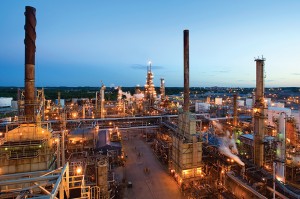With the global re-emergence of gasoline demand, octane enhancing isomerization units are making a comeback. Only recently, numerous isomerization units were idled due to reduced need for octane components. Partly due to the reversal in consumer interest in diesel driven cars resulting from the controversy with Volkswagen reportedly falsifying emissions results in the combustion of diesel, cost competitive high octane premium grade gasoline demand has predicated a revival of alkylation, catalytic reforming and isomerization units.
Light straight run (LSR) gasoline from the crude distillation unit, which is mostly pentanes and hexanes, can have its octane number improved by the isomerization process, which converts normal paraffins into their isomers (i.e., pentane to isopentane). This results in a significant octane increase as normal pentane (nC5) has an octane number of 61.7, while its isomer, isopentane (iC5), has an octane number of 92.3. In a single-pass isomerization unit, the octane number of LSR gasoline can be increased from 70 to 84.
According to information available from Siemens AG, gas chromatograph applications in the isomerization unit serve an important role in minimizing nC5 losses, such as in monitoring separation performance in the unit’s distillation towers. Siemens noted the importance of monitoring isomerization reactor efficiency, involving iC5 and nC5 in the reactor effluent, with the onus on maximizing conversion of nC5 to iC5. For the unit’s deisopentanizer, a chromatograph measures nC5 so that reactor conditions can be adjusted to minimize nC5 impurity in the product. Then, monitoring iC5 in the stabilizer tower overhead further minimizes iC5 losses. Elsewhere, nC5 losses can be further minimized by monitoring C5/C6 splitter bottoms.
The isomerization process begins with the C5 and C6 feed mixing with the pentane recycle stream, entering a deisopentanizer. The iC5 is separated out immediately because it is nC5 and nC6 that isomerizes. The bottoms of the deisopentanizer containing nC5 and C6’s are dried and hydrogenated. The bottoms stream is dried because HCl is present, which is used for maximum catalyst activity, and hydrogen is added to minimize carbon deposits on the catalyst. This stream is passed through the reactor to isomerize the hydrocarbons.
After the reactor effluent has the hydrogen removed, it enters a stabilizer where the propane and lighter hydrocarbons are removed to be used as fuel gas. Finally, the reactor effluent enters a C5/C6 splitter that sends the iC5 produced and the unreacted nC5 back to the feed of the deisopentanizer. The bottoms product contains the C6’s and is sent to the blending pool.
Just recently, Tesoro announced its Clean Products Upgrade Project at the 120,000 bpd refinery in Anacortes, Washington facility. This will include isomerization capacity to produce more octane for formulating a higher value gasoline product for export to Asia. Rising global vehicle sales of gasoline driven cars, particularly with the turbocharged gasoline engines being introduced in luxury vehicles has led to a tight octane market. For example, although China’s economy has slowed down from double-digit to single-digit growth, its luxury car market has accelerated from single-digit to double-digit growth. This market contradiction is one compelling reason making the economics for re-investing in octane upgrading units attractive. Dallas based Turner Mason & Company projects tightness in the global octane market until 2018.








Leave a Reply
You must be logged in to post a comment.